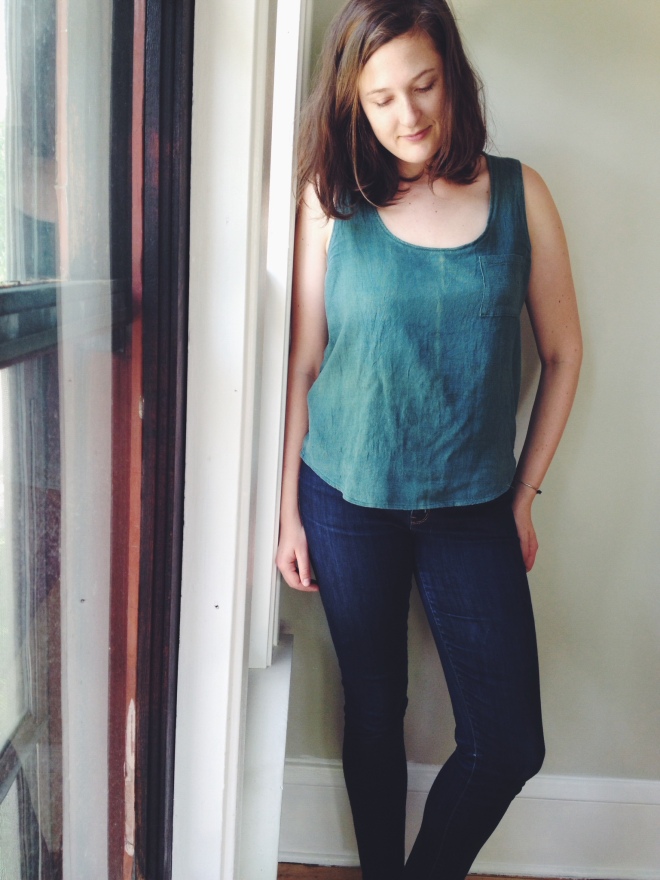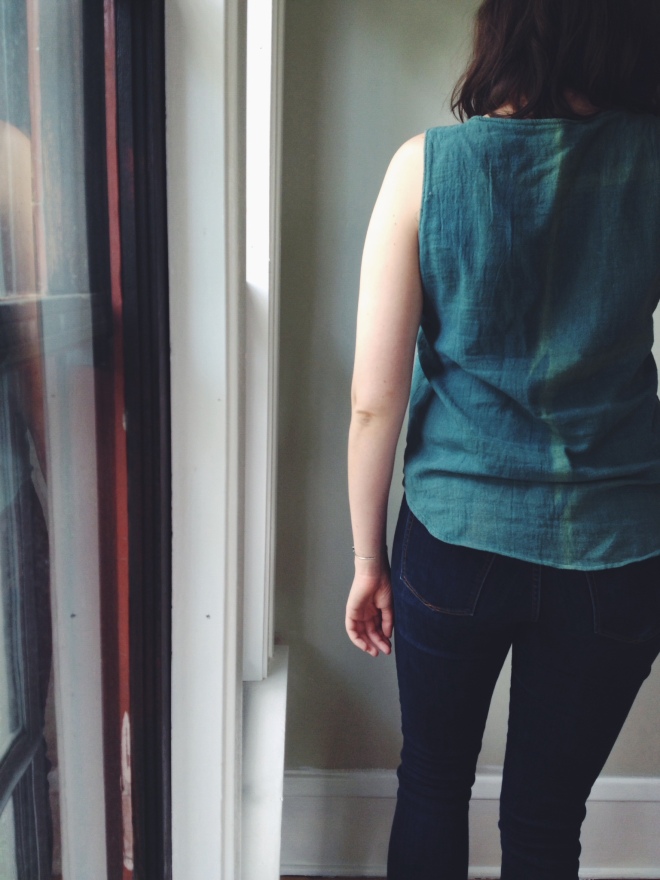Last week’s theme for Slow Fashion October was small:
handmade / living with less / quality over quantity / capsule wardrobe / indie fashion / small-batch makers / sustainability
I thought I’d document my own small travel wardrobe. I think I first heard the term “capsule wardrobe” about a year ago, and I was fascinated by projects like the 333 Wardrobe and the blog Unfancy, but at the time my wardrobe was mostly a hodgepodge of thrifted items which tended to have a little too much personality to be compatible in a pared-down capsule.
While I haven’t been purposefully working toward a capsule wardrobe, I’ve found that since I started making the majority of my clothes it’s been much easier to live with a smaller wardrobe, because I can make exactly what I want (within the realm of my sewing/knitting skills), my clothes are a more flattering and comfortable fit, and I know much more intimately how each piece functions and how it can play a role in my wardrobe.
Travel is such a good way to test this. What better “capsule” than a suitcase? In the past 6 weeks I’ve had the good fortune to take 3 trips of just over a week each — each with a unique climate and different dress code.
Here is what I packed, what worked, and what I could have done without:
Trip 3: Oakland, Berkeley, and Marin County, California (9 days) (pictured above)
- my favorite pair of cut-off jean shorts. They are high-waisted, light wash, and from a thrift store.
- 2 pairs of Hudson pants. One is of hemp/organic cotton knit, fabric was made in China by Pickering International, purchased online through Spool PGH. The other is of woven tencel fabric made by Feral Childe (fabric was probably made in China, but I know they screenprint most of their collections in the US) and purchased while visiting Fancy Tiger Crafts in Denver. I wear the knit pair as my pajamas and the woven pair has become an indispensable casual trouser — coming to the blog soon!
- a pair of black Virginia leggings in a heavyweight organic cotton/spandex knit from Organic Cotton Plus, US grown cotton, fabric made in the States (in the Carolinas or Tennessee if I had to guess), dyed using low-impact synthetic dyes. I sewed these the night before I left for England and they were a perfect fit for my body and my travel needs! I made them extra long and it feels like a luxury to have a little bit of fabric scrunching at my ankles.
- 5 shirts: one khadi Scout Tee (blogged here), one woven sleeveless Hemlock Tee (blogged here), one black Everlane v-neck, one white linen tee from Zady, one organic cotton graphic tee (free from a volunteer gig) that I wear as a sleep shirt. I absolutely love what Zady is doing with transparency and timeless pieces – check them out if you’re looking for ready to wear clothes! I’m pretty over Everlane’s faux “radical transparency” so I won’t be purchasing from them again, but a classic black v-neck does come in handy. I would recommend CA Cloth Foundry (US grown & made with Sustainable Cotton Project fiber) and Be Good Clothing (organic, Indian grown & made) for basic knit tees.
- a cocoon-shaped tunic from Hackwith Design House, purchased at their sample sale this summer. I really admire this Minneapolis-based brand who produces all their clothing in their St. Paul studio and releases pieces in limited collections, bucking the typical fashion season system. They don’t use organic materials (that I’ve seen) but have an eye toward sustainability and source a lot from a deadstock fabric warehouse in the Twin Cities. This tunic feels like a tencel blend, and even on sale it was a big purchase for me but I am so in love with it.
- 2 prism dresses. One long-sleeved in khadi from A Verb for Keeping Warm (blogged here), the other short-sleeved in organic cotton fabric that was grown by Sally Fox, made in Japan, and purchased at A Verb for Keeping Warm. What can I say, I love this simple dress pattern. The short-sleeved dress is my new “special occasion” dress that I made in part for this trip; check back for its origin story.
- 3 Northern California Fibershed sweaters. One pullover, color-blocked Hayward sweater in Twirl Yarn Twirling Petals, purchased at Knitterly Petaluma, the first sweater I ever knit! One pullover, cropped Ondawa in Radius Yarn (sourced from Windrush Farm), purchased at Knitterly Petaluma. One cocoon wrap/shrug Escher in Twirl Yarn, purchased at Knitterly Petaluma and one skein at the Fibershed stand at the farmer’s market.
- my jean jacket. boxy, 3/4-sleeves, from the thrift store.
- a cashmere beanie, also from Everlane, very warm and soft but would not purchase again (would knit my own or purchase locally).
- Sven clogs & Birkenstock sandals.
- underwear & socks, nearly all old & unremarkable, but hopefully to be replaced by handmade versions soon! While in Oakland, I purchased a Pansy bra after at least 6 months of deliberating — I’m in love with it!
(leggings + clogs on a rare rainy day in Oakland. Also wearing: Hackwith tunic, Escher)
Trip 2: London & Plymouth, UK (9 days)
Nearly the same, but I swapped:
- raincoat instead of jean jacket. Purchased from American Apparel several years ago, pockets are unfortunately wearing out.
- 2 light dresses instead of jean shorts. One is an organic cotton Alder shirt dress made of remnant fabric from a Feral Childe sample sale (available online here!). The other is a Charlotte Kan tie-dress in a striped linen-cotton blend, purchased from Fabric.com with a certain amount of guilt (no idea where/how it was made, but I could not get those stripes off my mind!).
- ankle boots instead of birkenstocks. They are sort of oxblood color, purchased on clearance at Free People, made in Spain I believe. I’ve had them resoled and fixed up twice and they have lasted longer than previous pairs, but they start to pinch my toes after a whole day of walking.
- loafers (thrifted, resoled) as a back up pair of shoes, but I didn’t end up wearing them.
- a kanga/cotton shawl/large scarf, purchased when I was in Tanzania. Helpful to have a big rectangle like this as a multipurpose item – I wore is as a scarf, a blanket on the plane, and wrapped up food and small items in it.
Trip 1: Eastern seaboard (CT & RI), USA (7 days)
Nearly the same as trip 3, I think (I didn’t document it at the time), but I hadn’t made the leggings or short-sleeved Prism dress, so I packed the striped linen-cotton tie dress. I also added:
- a bathing suit from J.Crew, one piece V-neck.
- a sun hat gifted/handed down to me from my mom 🙂
- my Sallie jumpsuit in black organic cotton knit purchased at Verb a really long time ago (probably made in China by Pickering?). I love this jumpsuit but it collects all the dust and cat hair really quickly, so it’s not that helpful for traveling (without a lint roller, at least).
- Nisolo Ecuador Huarache sandals in the color almond, I think ? I saved up to buy these this summer as lightweight but close-toed shoe, and I love the style but unfortunately they’ve stretched out a little too much. Not sure what to do about that… Alas, we’re heading into cool weather here pretty fast.
(jean shorts + linen Zady tee + Escher sweater in Oakland, also basically my summer uniform. Worn with clogs)
the takeaway
- I could have gone with 1, maybe even 2 fewer shirts for my California trip, but I was afraid that one or two would get smelly from a few days of physical labor, so I packed extra.
- To pack even lighter, I could have left my Hayward sweater at home for my California trip, because I wore the Escher wrap/shrug most days and Ondawa when it was cold (the heavy alpaca-wool blend was a lifesaver when I camped one night).
- I only wore the beanie once in California (while camping, and it did keep me warm!), so if I weren’t camping I could have left it at home.
- I wish I hadn’t waited so long to buy a Pansy bra, it’s my new favorite thing! I also wish I had budgeted to get some of their undies too, but I do hope to make some cloth habit ladyshorts with scrap knit fabric.
The big takeaway is that I think I’ve been basically wearing this “capsule” all summer, hah! It’s been very liberating to not have to dress for an office (and a bike commute) every day, so I’m lucky in that respect. The leggings are a huge help toward transitioning this capsule into cooler weather, but I’m starting to get nervous that 3 years in California has left me without much of a winter wardrobe. I’m planning out what to knit and sew pretty furiously, but of course, trying to keep it slow!





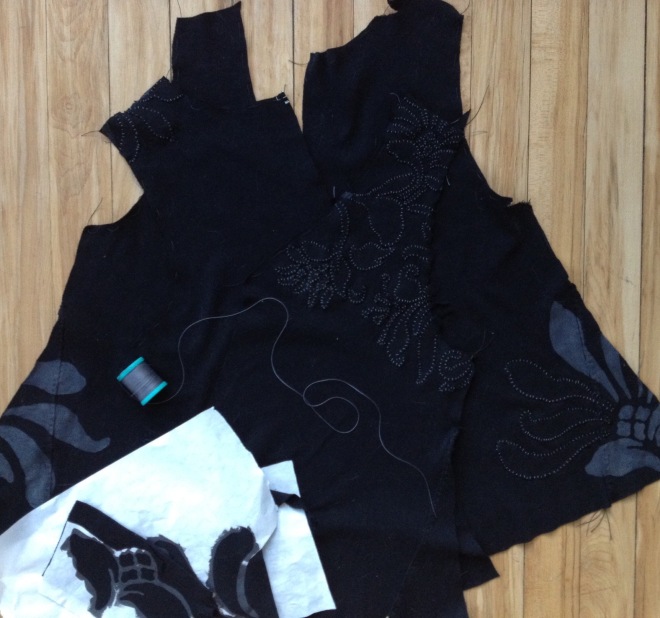
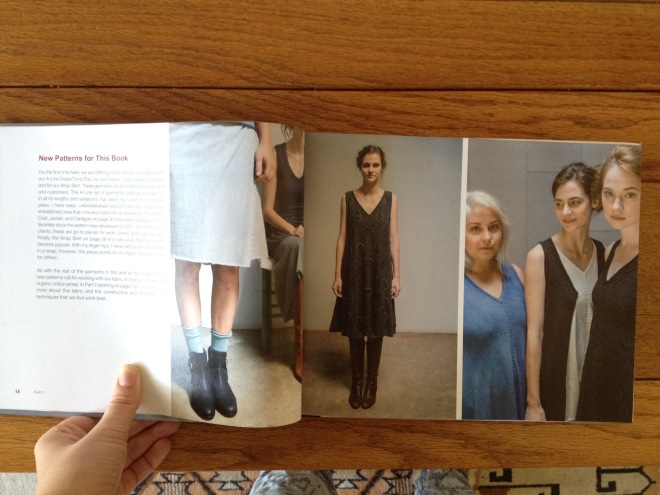
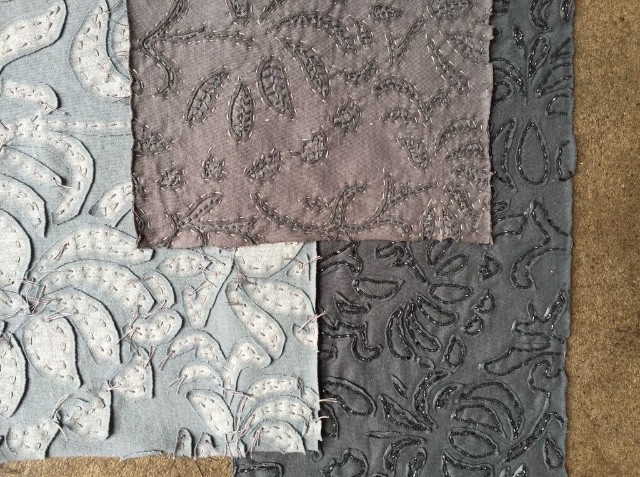
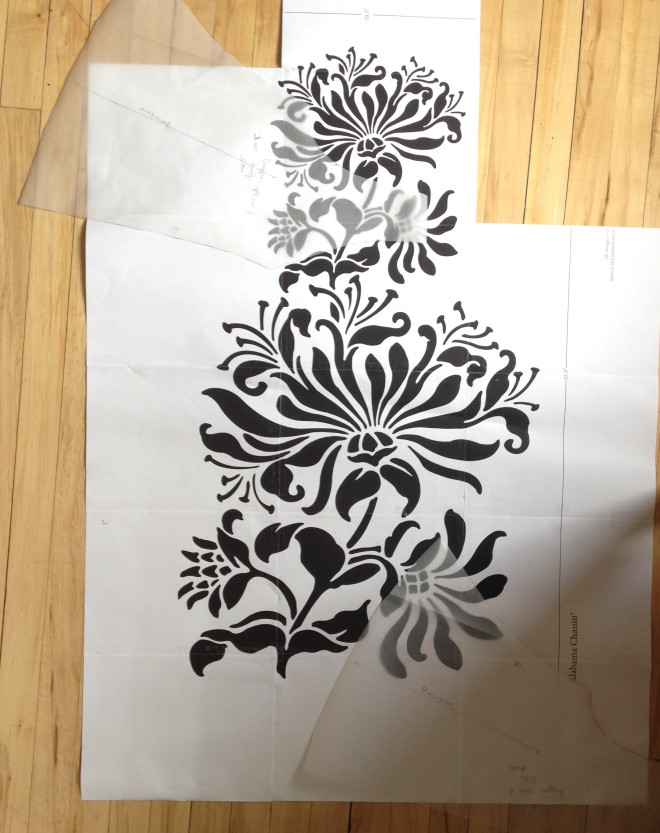
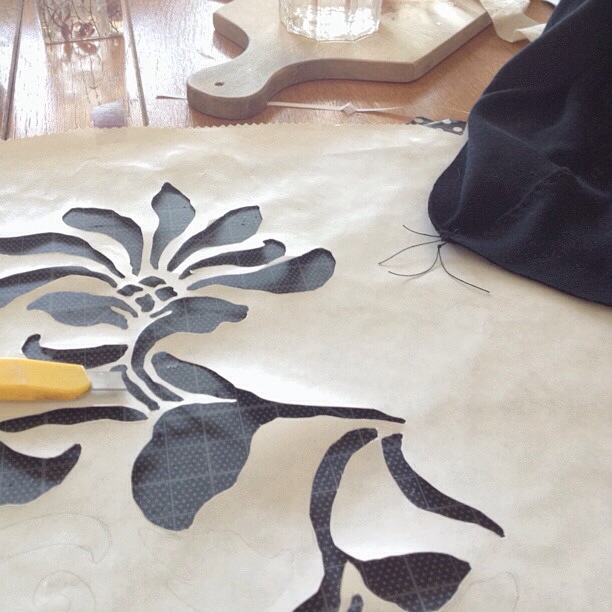
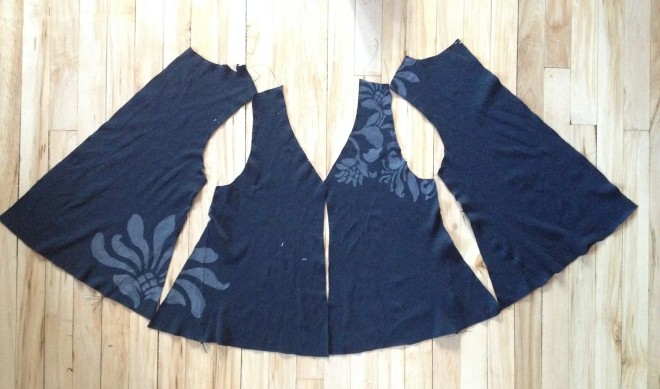
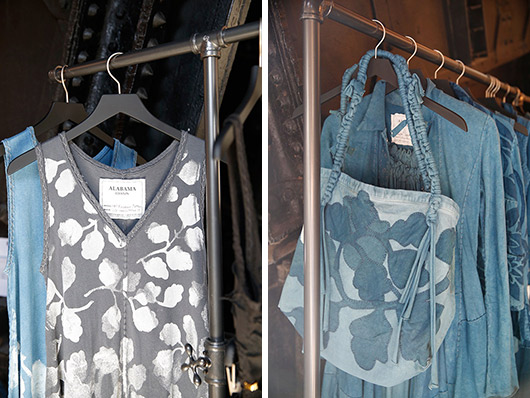
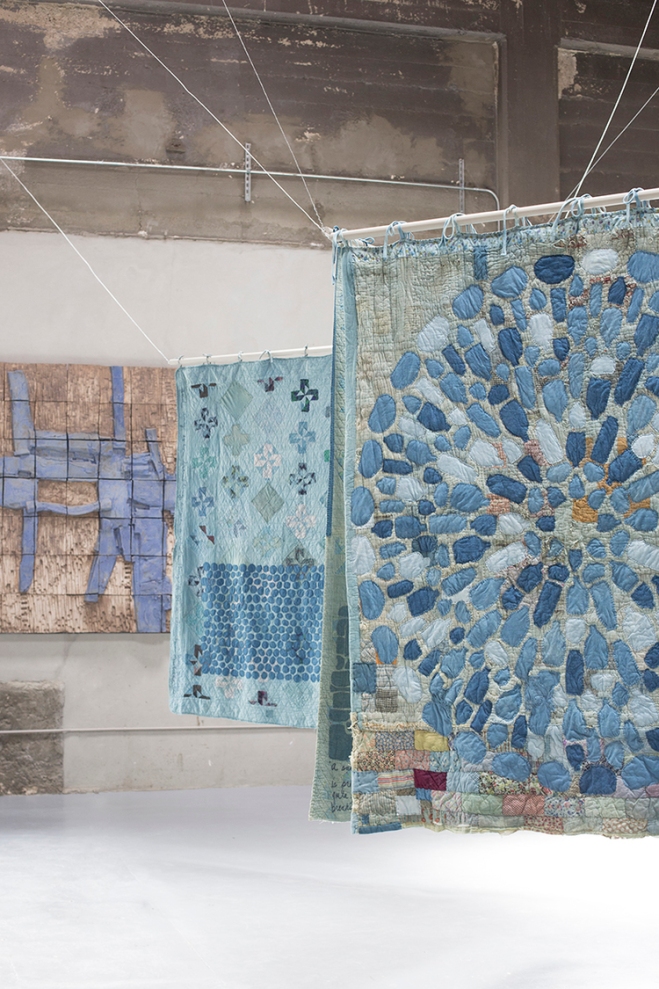






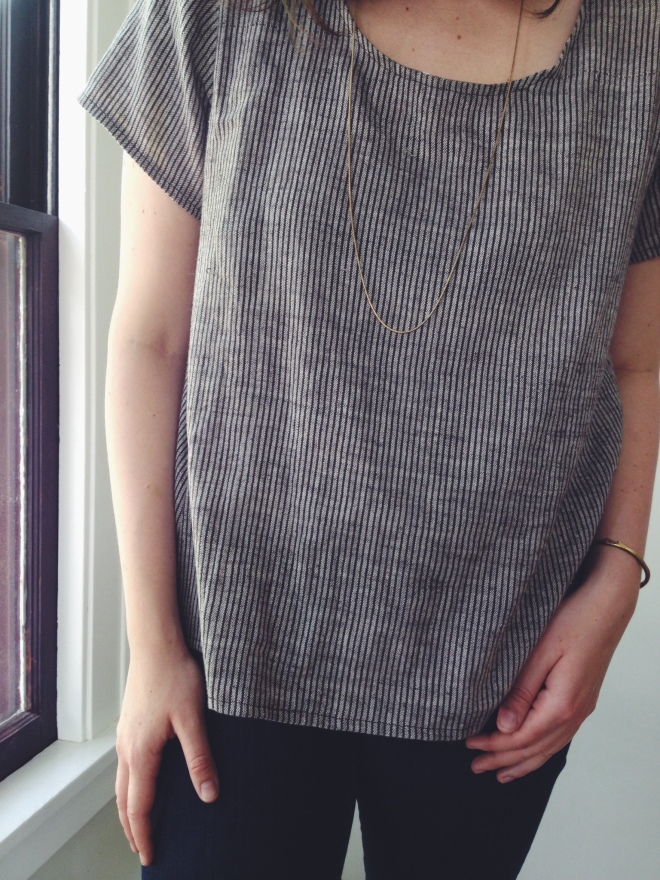 Khadi is a term for handspun and handwoven cloth, but it is also emblematic of the movement for Indian self-reliance and freedom from British colonialism. Gandhi advocated for each person to spin their own cotton and each community to weave their own cloth so that the Indian people would create home-grown textiles rather than buying fabric back from the British who held tight control over the cotton markets. Gandhi encouraged a daily practice of spinning with a foldable spinning wheel or charkha and community-scale fiber farmning, weaving, dyeing, and block-printing; a true example that the revolution begins at home. (This cursory overview of the history of khadi was imparted by my teacher in India, Saatchi, and a brief stay in the village and ashram of
Khadi is a term for handspun and handwoven cloth, but it is also emblematic of the movement for Indian self-reliance and freedom from British colonialism. Gandhi advocated for each person to spin their own cotton and each community to weave their own cloth so that the Indian people would create home-grown textiles rather than buying fabric back from the British who held tight control over the cotton markets. Gandhi encouraged a daily practice of spinning with a foldable spinning wheel or charkha and community-scale fiber farmning, weaving, dyeing, and block-printing; a true example that the revolution begins at home. (This cursory overview of the history of khadi was imparted by my teacher in India, Saatchi, and a brief stay in the village and ashram of 